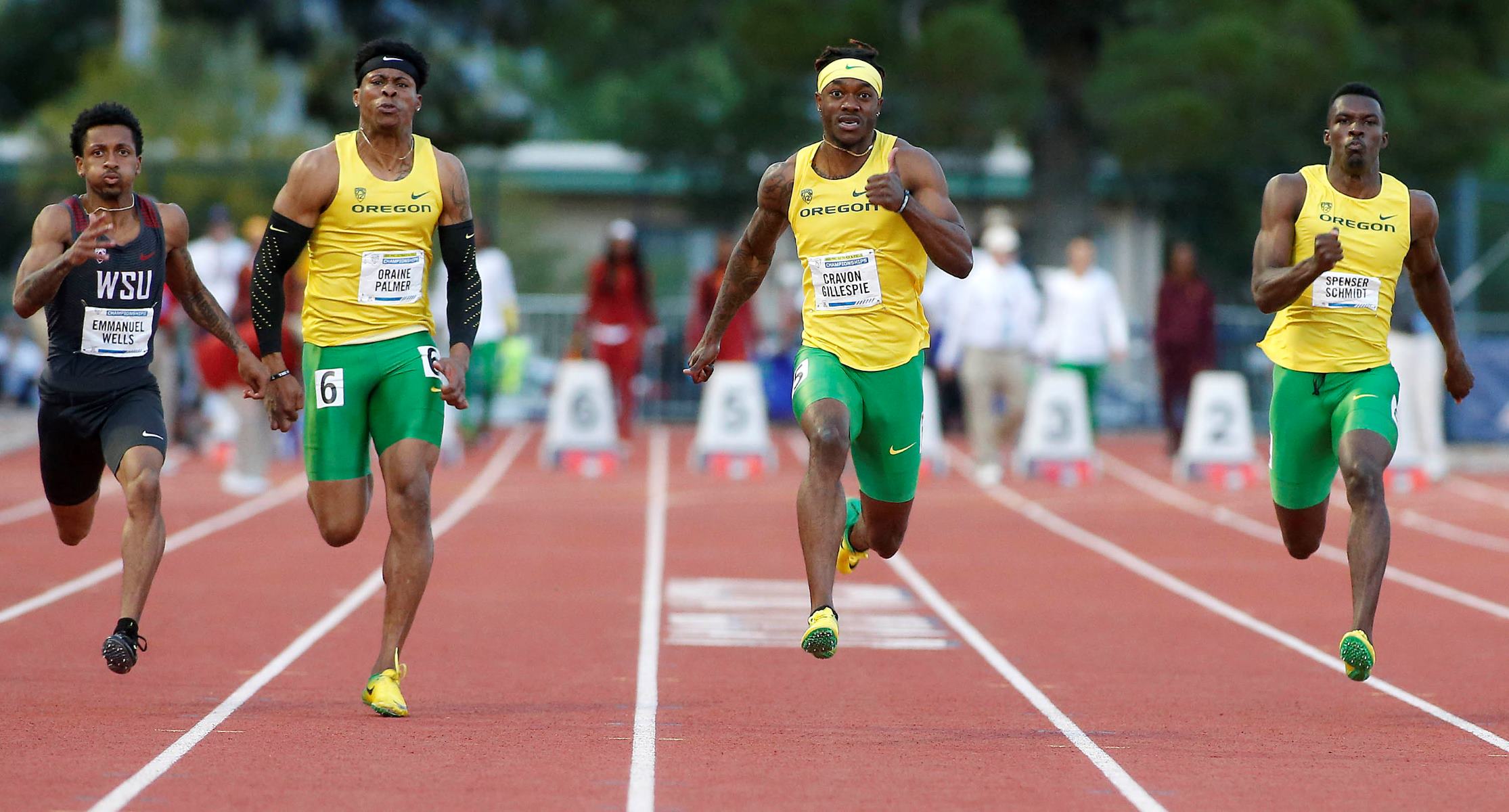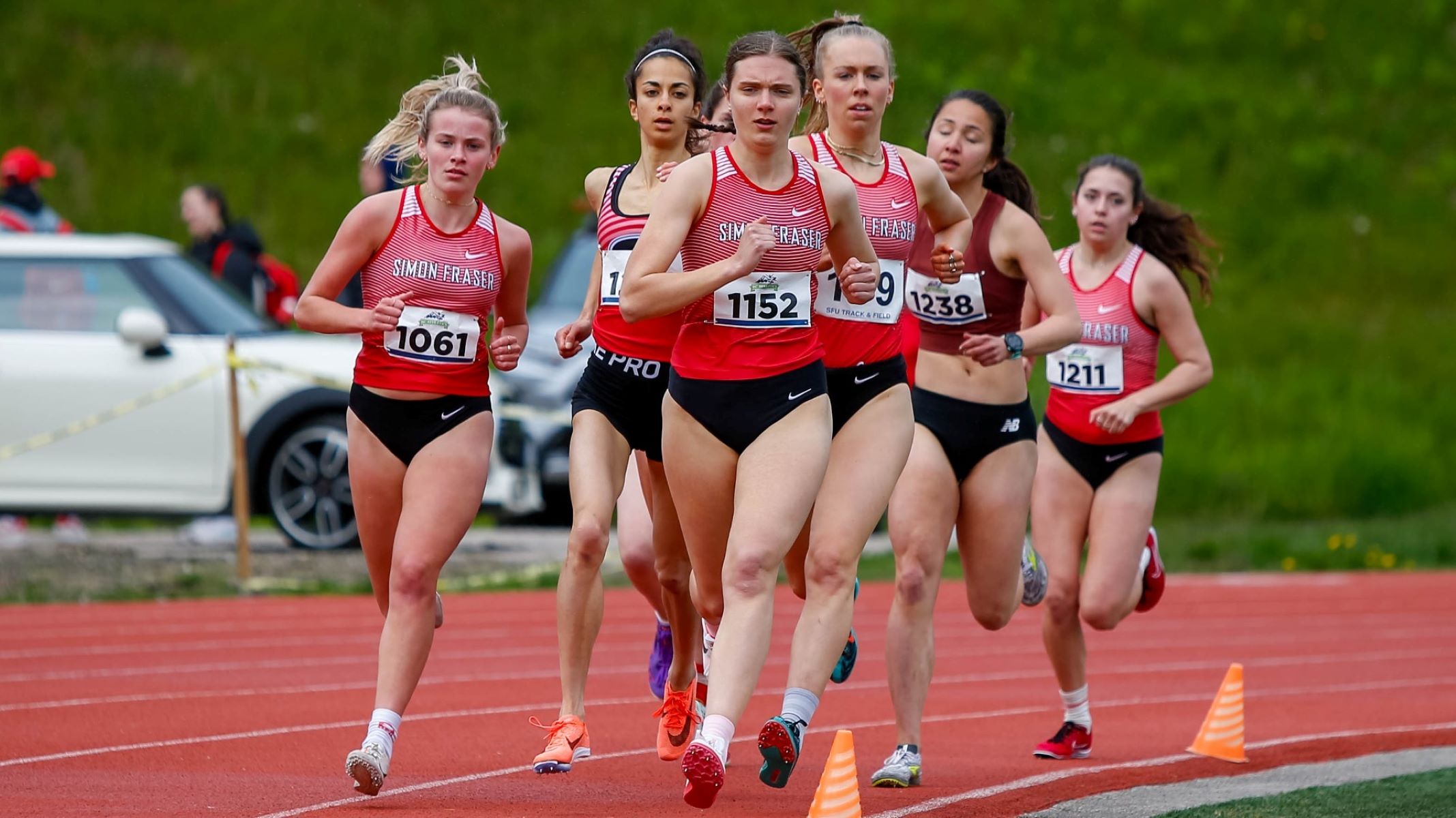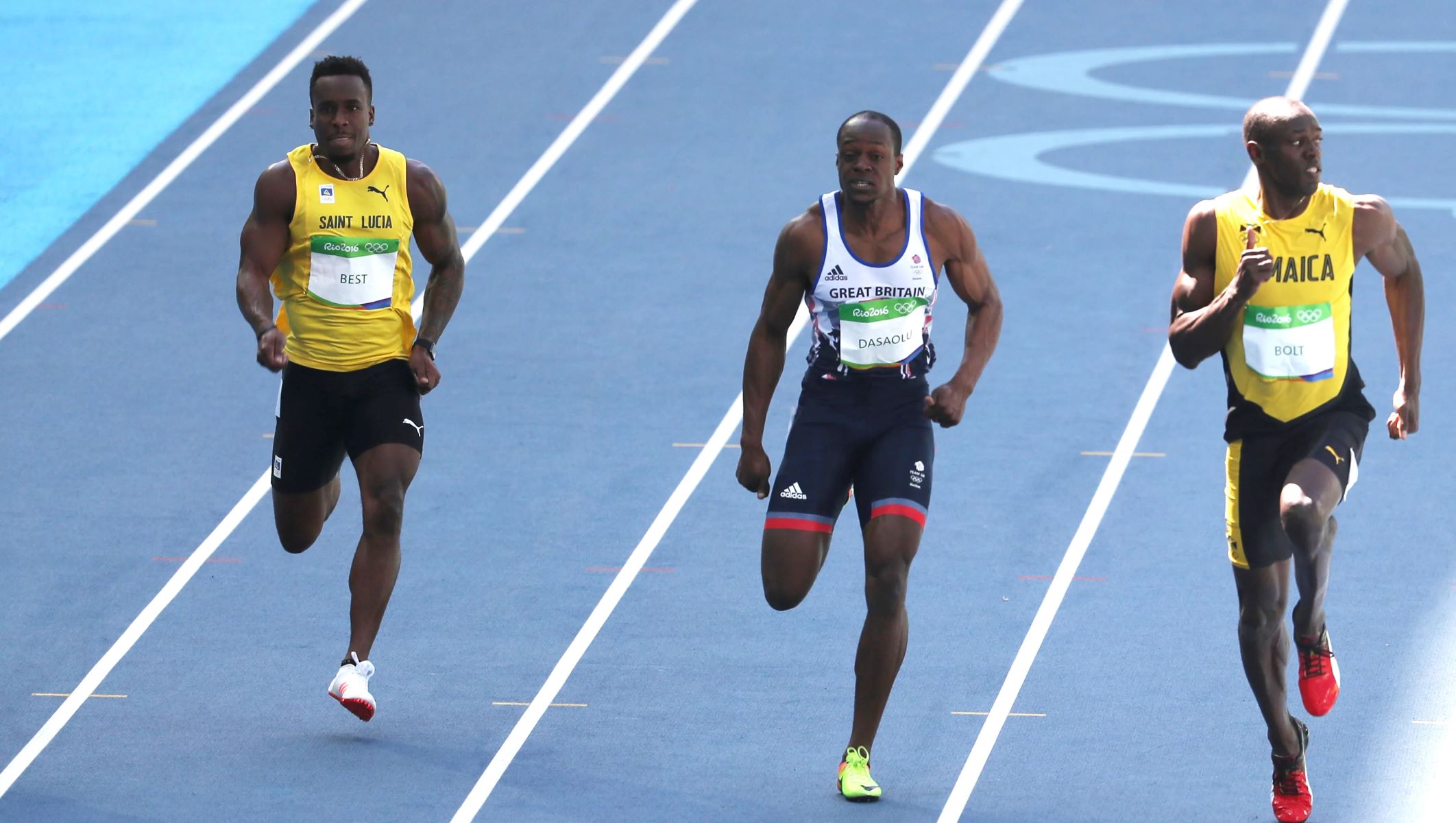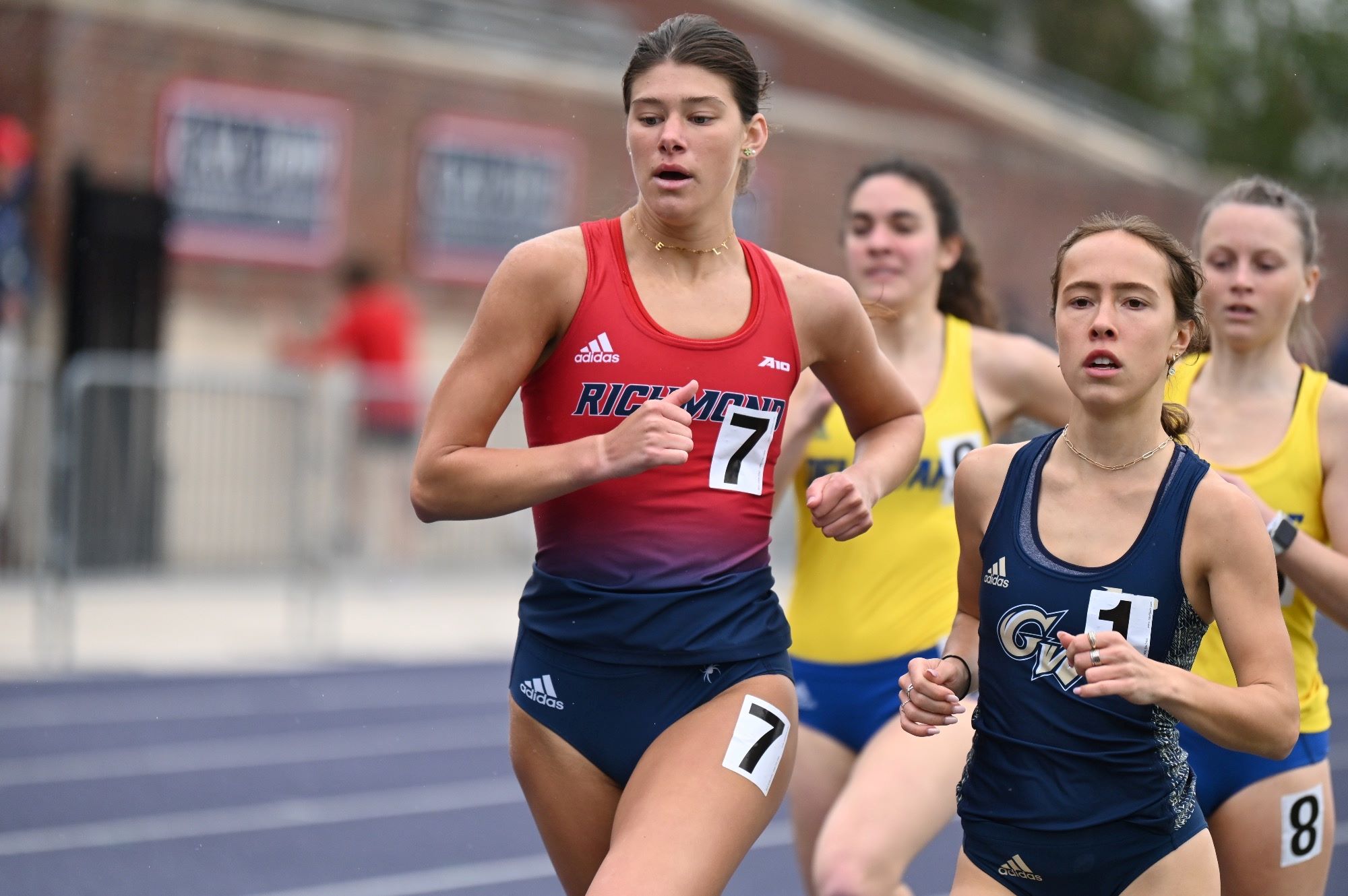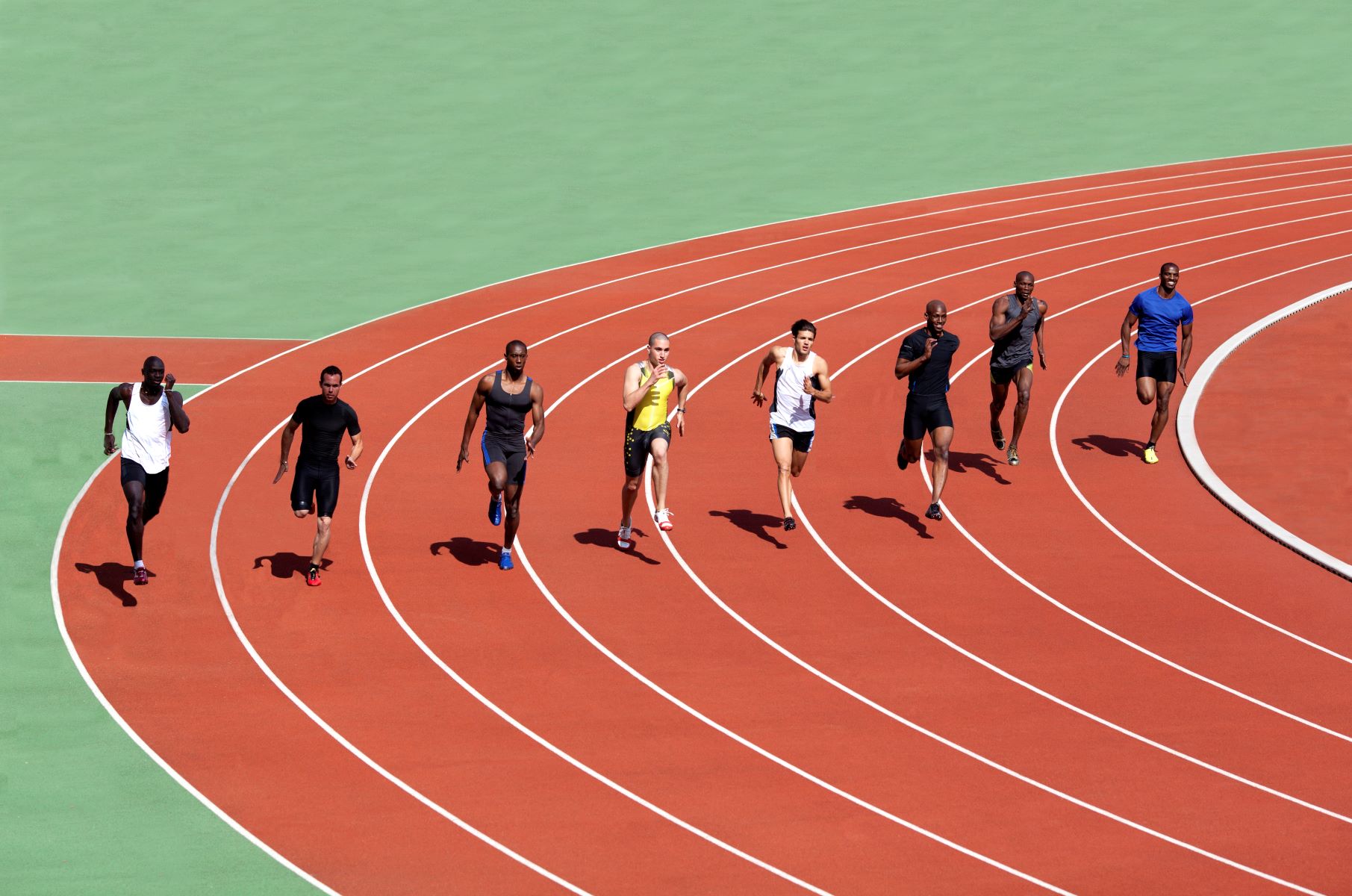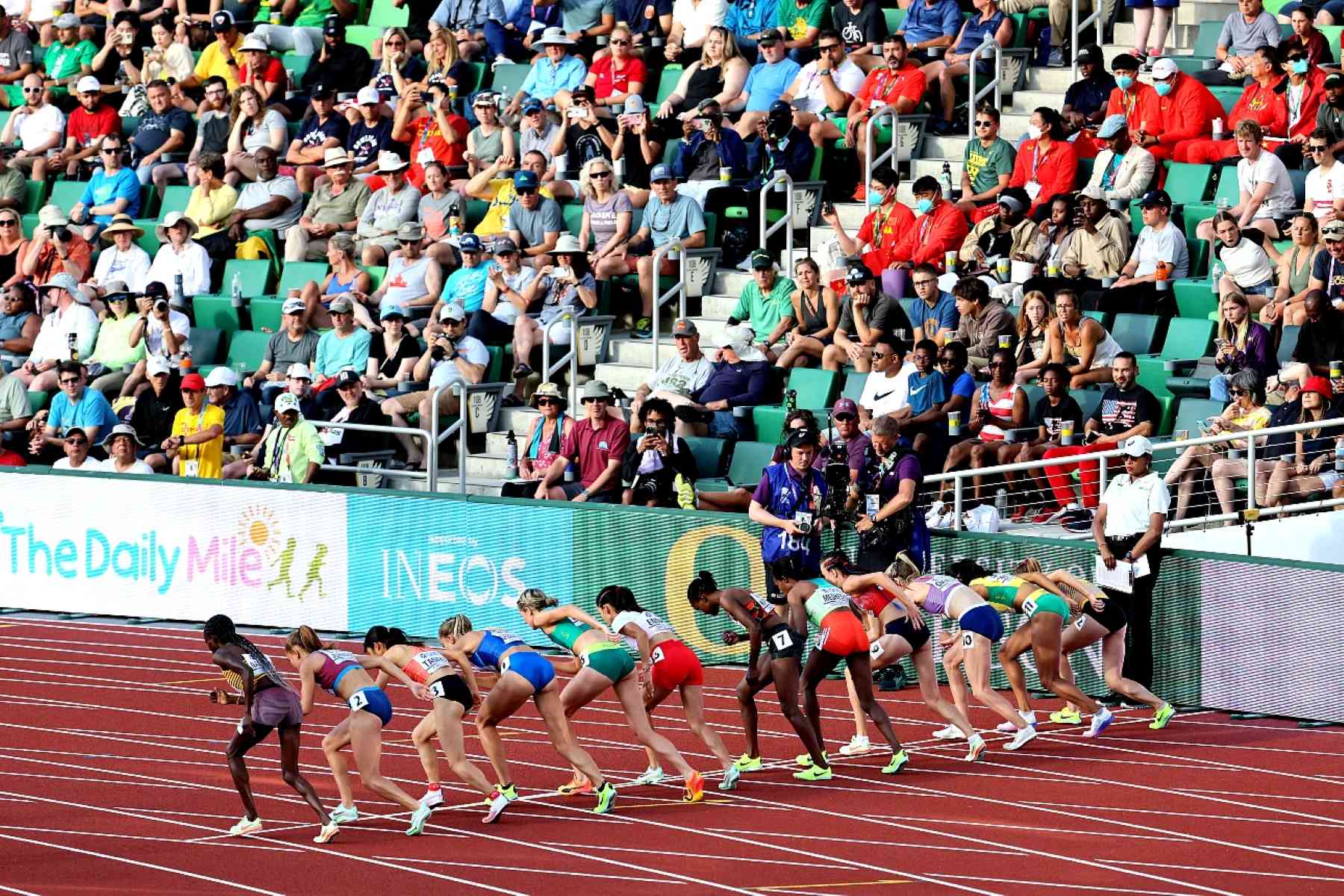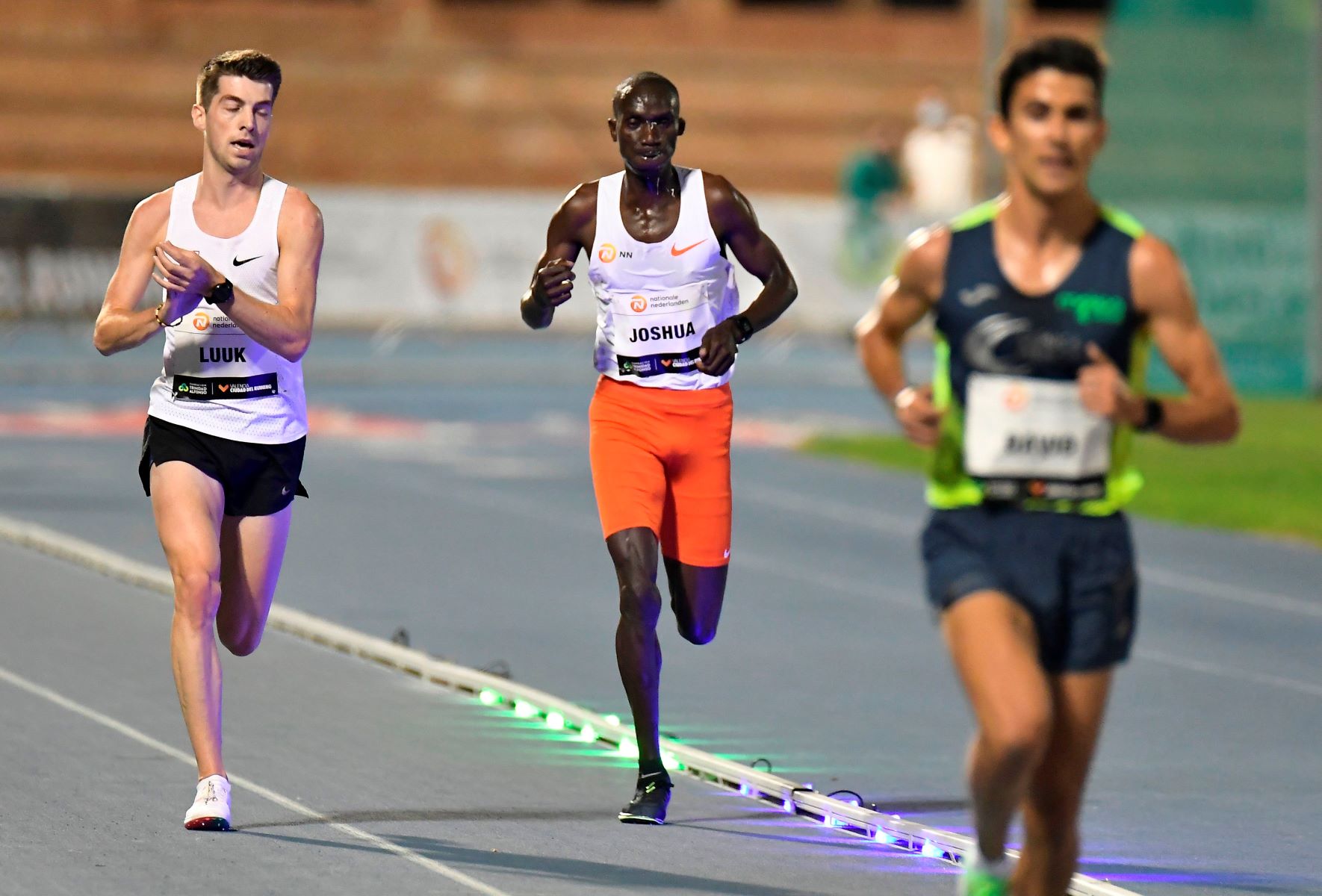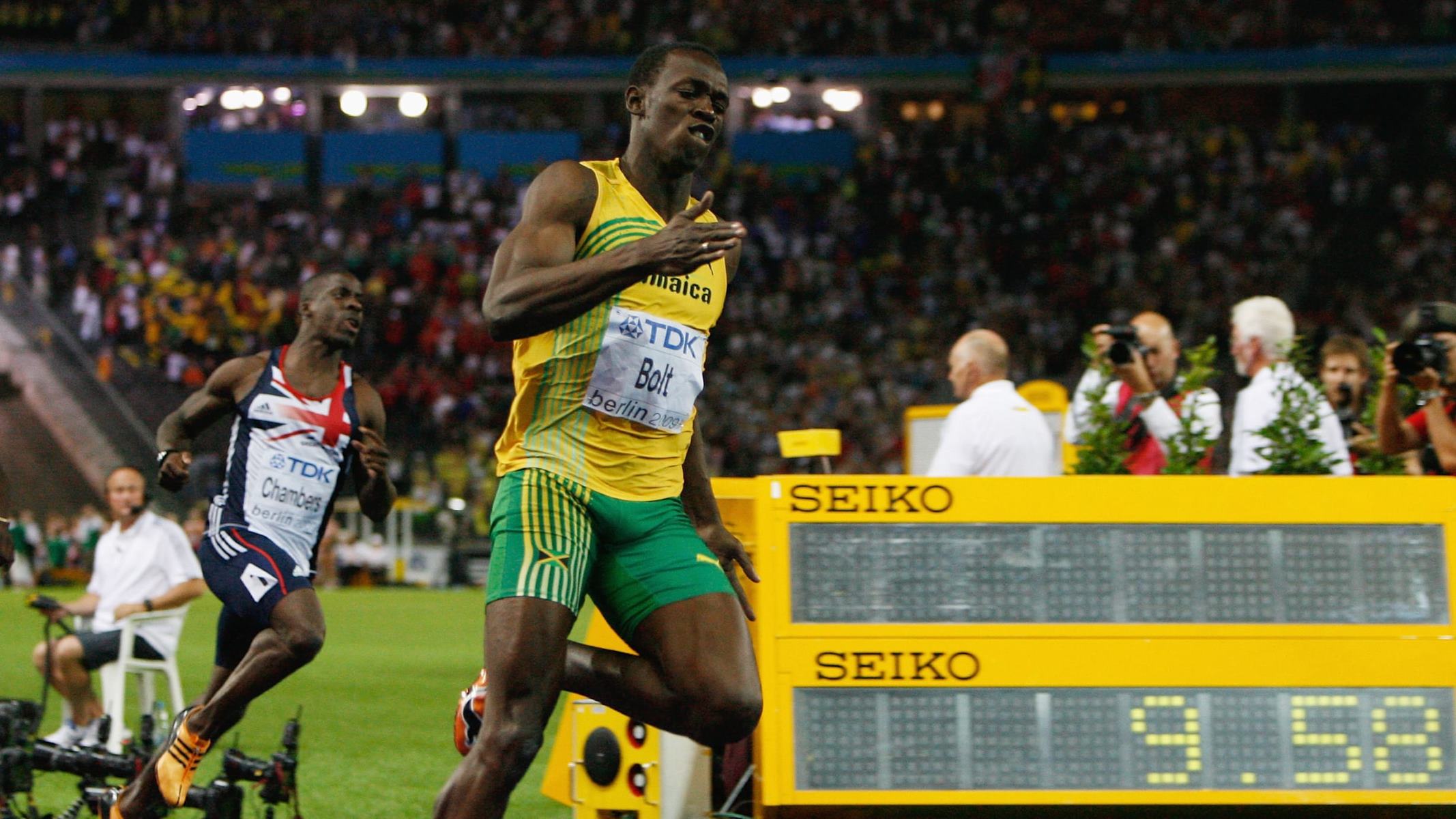

Featured
How Does Track And Field Records Work
Modified: January 2, 2024
Learn how track and field records work, from the history behind them to the criteria for setting and breaking featured records.
Introduction
Track and field is a sport that has captured the hearts of athletes and fans all around the world. From sprinting to long jump, shot put to pole vault, it is a diverse and thrilling discipline that showcases the incredible abilities of athletes. One of the most fascinating aspects of track and field is the concept of records. These records serve as benchmarks of achievement, representing the fastest, highest, or farthest performances in different events.
In this article, we will delve into the world of track and field records, exploring how they work and what factors influence them. We will examine the various measurement systems used, as well as the different types of records that exist. Additionally, we will explore how track and field records are recognized and the controversies and challenges that can arise in this realm. Finally, we will take a glimpse into the evolution of track and field records throughout history.
Track and field records hold immense significance, not only for the athletes who aim to achieve them but also for the sport itself. They inspire and motivate athletes to push their limits, to break barriers and rewrite the history books. They also captivate fans, who eagerly track every new record set, witnessing firsthand the power and determination of these incredible athletes.
So, join us as we embark on a journey to unravel the intricacies of track and field records. Discover the science and art behind setting new standards, and appreciate the tremendous skill and athleticism that leaves us in awe.
Understanding Track and Field Records
Track and field records are the pinnacle of achievement in the sport. They represent the fastest sprint times, the highest jumps, the farthest throws, and the longest distances covered by athletes in various events. Understanding how track and field records work involves delving into the intricacies of measurement, performance evaluation, and record recognition.
To set a track and field record, an athlete must surpass the previous best performance in a specific event. The performance is measured using standardized equipment and techniques, ensuring fairness and accuracy. For example, to measure a sprint time, electronic timing systems are used to capture the exact moment the athlete crosses the finish line.
It’s important to note that track and field records vary depending on factors such as age groups, gender, and equipment used. For instance, there are separate records for men and women, and age categories range from youth to masters. Additionally, records can vary based on the use of different equipment or aids, such as wind assistance in sprints or altitude adjustments in distance events.
The official measurement systems for track and field records differ across events. In track events like sprints and hurdles, time is the primary measure. For jumps and throws, distance or height is measured. Distance events, such as long distance running or walking, are measured in meters or kilometers.
Achieving a track and field record requires athletes to not only possess exceptional physical abilities but also adhere to strict rules and regulations. These rules vary for each event and are established by governing bodies like the International Association of Athletics Federations (IAAF) or the International Paralympic Committee (IPC). Athletes must compete under specific conditions, follow event-specific protocols, and adhere to anti-doping regulations to qualify for record consideration.
Track and field records serve as a benchmark for performance and enable comparisons between athletes from different eras. They inspire athletes to strive for greatness and push the boundaries of human capability. As technology advances and training techniques evolve, these records continue to be broken, showcasing the relentless pursuit of excellence in track and field.
Now that we have a better understanding of how track and field records work, let’s explore the various factors that can influence these remarkable achievements.
Factors That Affect Track and Field Records
Track and field records are influenced by a combination of factors that can impact an athlete’s performance. These factors can either enhance or hinder an athlete’s ability to achieve record-breaking results. Let’s explore some of the key factors that can affect track and field records.
Training and Conditioning: A crucial factor in achieving track and field records is an athlete’s training and conditioning regimen. The level of physical fitness, strength, and endurance plays a significant role in an athlete’s performance. Proper training techniques, personalized workouts, and a balanced training program designed by coaches and trainers can give athletes the edge they need to break records.
Technique: Mastering the proper technique specific to each event is essential for achieving record-breaking performances. The correct form, stride length, body position, and timing can significantly impact an athlete’s results. Athletes spend countless hours practicing and refining their techniques to maximize their efficiency and performance in their respective events.
Equipment: The type and quality of equipment used in track and field events can have a notable impact on record-breaking performances. Advancements in technology, such as track surfaces, footwear, or pole vault poles, can provide athletes with improved grip, better energy transfer, and enhanced performance. However, governing bodies ensure that equipment regulations are in place to maintain a fair playing field across athletes.
Environmental Conditions: Environmental conditions, such as temperature, wind, and altitude, can have both positive and negative effects on track and field records. Tailwinds can provide a speed boost for sprinters, while headwinds can slow them down. Similarly, high altitude can affect an athlete’s oxygen intake and endurance. Strict guidelines and regulations are in place to account for these factors and ensure records are achieved under controlled conditions.
Competition Level: The level of competition can also impact track and field records. Athletes often thrive in competitive environments, pushing themselves to new heights when competing against the best in their field. Competitive races or events can create a momentum and adrenaline rush, leading to exceptional performances and even record-breaking moments.
Advancements in Sports Science: Over the years, advancements in sports science have provided athletes with access to cutting-edge training methods, nutrition, and recovery techniques. These advancements have played a significant role in breaking barriers and pushing the limits of human performance. Sports scientists, trainers, and nutritionists work with athletes to optimize their training programs and support them in achieving their full potential.
The interplay of these factors can either contribute to smashing records or hinder an athlete’s pursuit of excellence. To achieve a record-breaking performance, athletes must strike a balance between training, technique, equipment, external conditions, and competition-level preparations.
Now that we have explored the factors that can influence track and field records, let’s dive into the various measurement systems used to validate and recognize these remarkable achievements.
Measurement Systems in Track and Field Records
Accurate and precise measurement is crucial in track and field records to ensure fairness and consistency across performances. Various measurement systems and techniques are employed to determine the exact distance, time, or height achieved by athletes in different events. Let’s explore some of the common measurement systems used in track and field records.
Timing: In track events, timing is of paramount importance. Electronic timing systems are used to measure the exact time it takes for an athlete to complete a race. These systems utilize high-speed cameras and sensors to capture the precise moment athletes cross the finish line, ensuring accurate timing down to thousandths of a second. This level of precision is vital in determining new records or comparing performances against previous ones.
Distance Measurement: Different techniques are employed to measure the distance achieved in jump and throwing events. In long jump and triple jump, a measuring tape is used to mark the take-off point and the actual landing point. The distance is then measured from the take-off point to the landed position. Similarly, in throwing events like shot put or discus, the distance is measured from the throwing circle to the point where the implement lands within a designated sector.
Height Measurement: In high jump and pole vault, height is a crucial factor in determining record-breaking performances. A bar is set at a certain height, and athletes attempt to clear it. Height is typically measured using a graduated scale, which allows officials to determine precisely how high the bar was cleared by the athlete. This helps in validating new records and comparing performances against previous ones.
Electronic Distance Measurement (EDM): In certain track and field events, such as the javelin throw or hammer throw, an electronic distance measurement system is used. This system relies on laser technology to measure the exact distance of the throw. It provides accurate measurement by calculating the time taken for the laser beam to travel from the source to the object and back to the sensor.
Wind Measurement: For sprint events, wind speed can significantly impact an athlete’s performance. To account for this, wind measurement systems are utilized. An anemometer is placed near the track to measure the wind speed and direction. If the wind speed exceeds a certain threshold (usually 2 meters per second), the recorded time may not be eligible for record consideration due to the potential assistance or hindrance provided by the wind.
The usage of these measurement systems ensures standardized and consistent evaluation of track and field performances. By utilizing accurate and reliable technology and techniques, athletes can be confident that their achievements are measured precisely, thereby upholding the integrity of the records they aspire to break.
Now that we have a better understanding of the measurement systems used in track and field records, let’s explore the different types of track and field records that athletes strive to achieve.
Types of Track and Field Records
Track and field encompasses a wide range of events, each with its own set of records to be achieved. These records highlight the remarkable performances of athletes across various disciplines and serve as benchmarks of excellence. Let’s delve into the different types of track and field records that athletes strive to achieve.
World Records: World records are the most prestigious and recognized records in track and field. They represent the best performances ever achieved globally in a specific event. World records are officially recognized by international governing bodies such as World Athletics (formerly known as the International Association of Athletics Federations – IAAF) and serve as the ultimate goal for athletes. These records symbolize the pinnacle of human capability and are often considered the holy grail in the world of track and field.
National Records: National records represent the best performances achieved by athletes from within a specific country. These records showcase the top performances achieved by athletes on a national scale and provide a measure of national pride. They serve to inspire and motivate athletes within a country to aim for excellence and put their names in the record books.
Continental Records: Continental records recognize the best performances achieved within a specific continental region. For example, there are records for each continent, such as European records, Asian records, African records, and so on. These records serve to highlight the outstanding performances achieved by athletes within their respective continental boundaries and provide a benchmark for comparison.
Age Group Records: Age group records are specific to different age categories within track and field. These records are recognized for various age groups, ranging from youth to masters. They highlight exceptional performances achieved within specific age ranges and encourage athletes of all ages to strive for excellence. Age group records allow athletes to measure their performance against their peers and serve as a source of motivation for continuous improvement.
Paralympic Records: Paralympic records recognize the best performances achieved by athletes with disabilities. These records are categorized based on impairment classifications and serve as a testament to the outstanding capabilities of Paralympic athletes. Paralympic records provide a platform for athletes to showcase their skills and inspire others by pushing the boundaries of what can be achieved in track and field, regardless of physical limitations.
Event-Specific Records: Each track and field event has its own specific records. These include records for individual events such as sprints, hurdles, long jump, high jump, shot put, javelin throw, and many more. These event-specific records capture the best performances achieved by athletes in each respective event and create a sense of competition and achievement within each discipline.
These various types of track and field records highlight the impressive achievements of athletes across the globe. They serve as inspirations for current athletes and future generations, encouraging them to push the limits of human potential in their pursuit of excellence.
Now that we have explored the different types of track and field records, let’s discover how these records are recognized and officially acknowledged.
How Track and Field Records Are Recognized
Track and field records are recognized and validated through a meticulous process to ensure accuracy and maintain the integrity of the sport. Various steps and criteria are followed to officially acknowledge new records. Let’s explore how track and field records are recognized.
Official Timing and Measurements: To recognize a new track and field record, the performance must be accurately timed or measured using standardized equipment and techniques. Official timers and measurement officials ensure that the timing and measurements are precise and adhere to the rules and regulations set by governing bodies. This ensures consistency and fairness in record-breaking performances.
Documentation and Verification: Once a performance is recorded, proper documentation is required to validate the record. This includes official documents such as results sheets, video recordings, and other supporting evidence. Records are thoroughly reviewed and verified by a panel of experts, officials, and reviewing committees to ensure that all criteria are met and that there are no discrepancies.
Governing Body Approval: Recognizing a new track and field record requires the approval of the respective governing body or athletic association. International governing bodies like World Athletics or national federations have the final authority to recognize and ratify records. These bodies carefully review the documentation and verification process to ensure compliance with their guidelines and regulations.
Anti-Doping Screening: In track and field, the integrity of records is closely associated with the fair play and absence of doping. Strict anti-doping protocols are followed to ensure that record-breaking performances are achieved without the use of prohibited substances or methods. Athletes must undergo anti-doping screening, and the absence of doping violations is a prerequisite for record recognition.
Publication and Announcement: After the official recognition of a new record, it is published and announced to the public through various channels. The record is added to official record books, websites, and other media platforms to document and showcase the achievement of the athlete. This public announcement serves to acknowledge and celebrate the incredible accomplishment and gives recognition to the athlete’s hard work and dedication.
Continual Record Updates: As track and field records evolve and new performances are achieved, previous records are continually updated and revised. With advancements in training techniques, technology, and the ever-growing pool of talented athletes, records are often broken and improved upon. This ensures that the record books reflect the current state of the sport and inspire future generations to surpass previously set standards.
The process of recognizing track and field records is critical in maintaining the credibility and transparency of the sport. By following strict guidelines, verifying performances, and ensuring adherence to anti-doping protocols, track and field records showcase the extraordinary achievements of athletes and inspire a culture of fair play and excellence.
Now that we understand how track and field records are recognized, let’s discuss some of the controversies and challenges that can arise in relation to these records.
Controversies and Challenges in Track and Field Records
Track and field records, like any other sporting achievements, are not immune to controversies and challenges. Factors such as advancements in technology, changing rules and regulations, and even allegations of doping can cast doubt on the validity and legitimacy of certain records. Let’s explore some of the controversies and challenges that have arisen in the realm of track and field records.
Technological Advancements: With the advancement of technology, new equipment and innovations can influence track and field performances. This has led to debates about the fairness of comparing performances across different eras. Some argue that technological advancements, such as improved track surfaces or specialized footwear, give athletes an unfair advantage, making it harder to compare records from different time periods.
Rule Changes: Track and field records can be affected by changes in rules and regulations introduced by governing bodies. Changes in event formats, equipment specifications, or measurement techniques can lead to records being reset or categorized differently. This can cause controversy and debates around the validity and significance of the existing records and the records achieved under the new rules.
Performance-Enhancing Drug Controversies: Doping allegations and scandals have plagued various sports, including track and field. The use of performance-enhancing drugs can significantly impact records and cast doubt on the legitimacy of performances. Athletes who are found guilty of doping violations can have their records disqualified and removed from the official record books. However, the impact of doping on past records can raise contentious debates and challenges.
Wind Assistance in Sprints: In sprint events, wind assistance can play a significant role in performance. Tailwinds can provide a speed boost, whereas headwinds can slow down athletes. Specific guidelines are in place to ensure that wind assistance is within acceptable limits. Records achieved with excessive wind assistance are classified differently or not recognized at all. Determining the precise influence of wind on performances can be a point of debate and controversy.
Historical Discrepancies: Track and field records stretch back several decades, and historical discrepancies can arise due to incomplete or inconsistent data. Some older records may not meet the current standards of measurement or documentation accuracy. As a result, there may be debates or challenges regarding the authenticity and reliability of these records.
Gender Equality and Categorization: Track and field records are categorized separately for men and women due to physiological differences. However, with discussions around gender inclusivity and breaking down gender barriers, controversies can arise regarding categories and records. Debates about allowing transgender athletes to compete in certain categories or recalibrating records to reflect gender equality can spark challenging conversations within the sport.
While controversies and challenges can cast doubt on certain track and field records, they also serve as opportunities for further examination, improvement, and progress within the sport. Governing bodies, athletes, and sports scientists continually evaluate and address these challenges to ensure fair play, enhance performance measurement techniques, and maintain the integrity of track and field records.
Now, let’s explore the evolution of track and field records throughout history, highlighting significant milestones and groundbreaking achievements.
Evolution of Track and Field Records
The evolution of track and field records throughout history reflects the constant progress and ever-improving performances of athletes. From ancient Olympic Games to modern-day competitions, track and field records have witnessed significant milestones and groundbreaking achievements. Let’s explore the fascinating evolution of track and field records.
Ancient Origins: Track and field events have roots in ancient civilizations, particularly ancient Greece. The ancient Olympic Games, dating back to 776 BC, showcased athletic prowess and celebrated record-breaking performances. These early records, often passed down through oral traditions, set the stage for the future development of track and field records.
Establishment of Modern Records: The modern era of track and field began in the late 19th century, with the establishment of organizations like the International Association of Athletics Federations (IAAF, now known as World Athletics). These governing bodies standardized event formats, rules, and record-keeping practices, providing a platform for athletes to set official records and inspire future generations.
Breaking the 4-Minute Mile: One of the most iconic moments in track and field history occurred on May 6, 1954, when Roger Bannister became the first person to run a mile in under four minutes. This remarkable achievement shattered the belief that a sub-four-minute mile was physiologically impossible. Bannister’s record-breaking performance opened the door for other athletes to push their limits and aim for new milestones.
Sprinting World Records: Sprinting records have been continuously redefined as athletes strive for faster times. From the legendary achievements of Jesse Owens in the 1930s to Usain Bolt’s dominance in the 21st century, sprinting records have been consistently broken and improved. Bolt’s electrifying performances in the 100-meter and 200-meter sprints, setting world records of 9.58 seconds and 19.19 seconds, respectively, showcased the breathtaking speed and athleticism of a new era of sprinters.
Women’s Track and Field Records: The recognition and progression of women’s track and field records have also undergone significant evolution. In the early 20th century, women faced many barriers and limitations in sports. However, with advances in gender equality, women’s track and field records have witnessed remarkable improvements. Athletes like Florence Griffith Joyner, who set world records in the 100-meter and 200-meter sprints in 1988, showcased the immense talent and athleticism of women in the sport.
Progressive Technological Enhancements: Technological advancements have also contributed to the evolution of track and field records. Improved track surfaces, specially designed footwear, and advanced training techniques have helped athletes achieve better performances. However, discussions around the impact of technology on records continue, as the line between innovation and unfair advantage can sometimes blur.
Continual Record-Breaking Moments: Throughout history, track and field records have been continuously shattered as athletes push the boundaries of human capabilities. From the emergence of new stars to the advancements in sports science, records are broken and reset, showcasing the ongoing progression and determination within the sport.
The evolution of track and field records is a testament to the relentless pursuit of excellence by athletes and the constant quest to surpass previous achievements. These records inspire generations of athletes to dream big, train hard, and aim for new heights, leaving an indelible mark on the history and legacy of the sport.
Now that we have explored the evolution of track and field records, let’s wrap up our journey through the fascinating world of track and field.
Conclusion
Track and field records hold a special place in the world of sports, symbolizing the pinnacle of achievement and embodying the incredible feats of athleticism by athletes across various events. Understanding the intricacies of track and field records, from their measurement systems to the recognition process, allows us to appreciate the dedication, skill, and passion required to reach new heights.
Throughout history, track and field records have experienced both triumphs and controversies. Technological advancements, rule changes, doping scandals, and evolving societal attitudes have all influenced the way records are achieved, recognized, and challenged. However, these controversies also provide opportunities for growth and progress within the sport, fostering discussions around fairness, inclusivity, and the pursuit of excellence.
As track and field records continuously evolve, athletes strive to break boundaries, inspired by the achievements of their predecessors. From breaking the four-minute mile to sprinting at unbelievable speeds, these records push the limits of human capability and serve as a constant source of inspiration for current and future generations of athletes.
While track and field records represent exceptional performances, it is important to remember that they are not the sole measure of an athlete’s worth. Each competitor brings their unique journey, challenges, and victories to the sport, and each performance, whether a record or not, showcases the indomitable spirit of human potential.
As we continue to witness the evolution of track and field records, let us celebrate the tenacity, perseverance, and dedication of athletes as they strive to achieve new heights and inspire the world with their astounding performances. Whether on the track, in the field, or within ourselves, let the pursuit of greatness continue to ignite our passion and drive for excellence.
